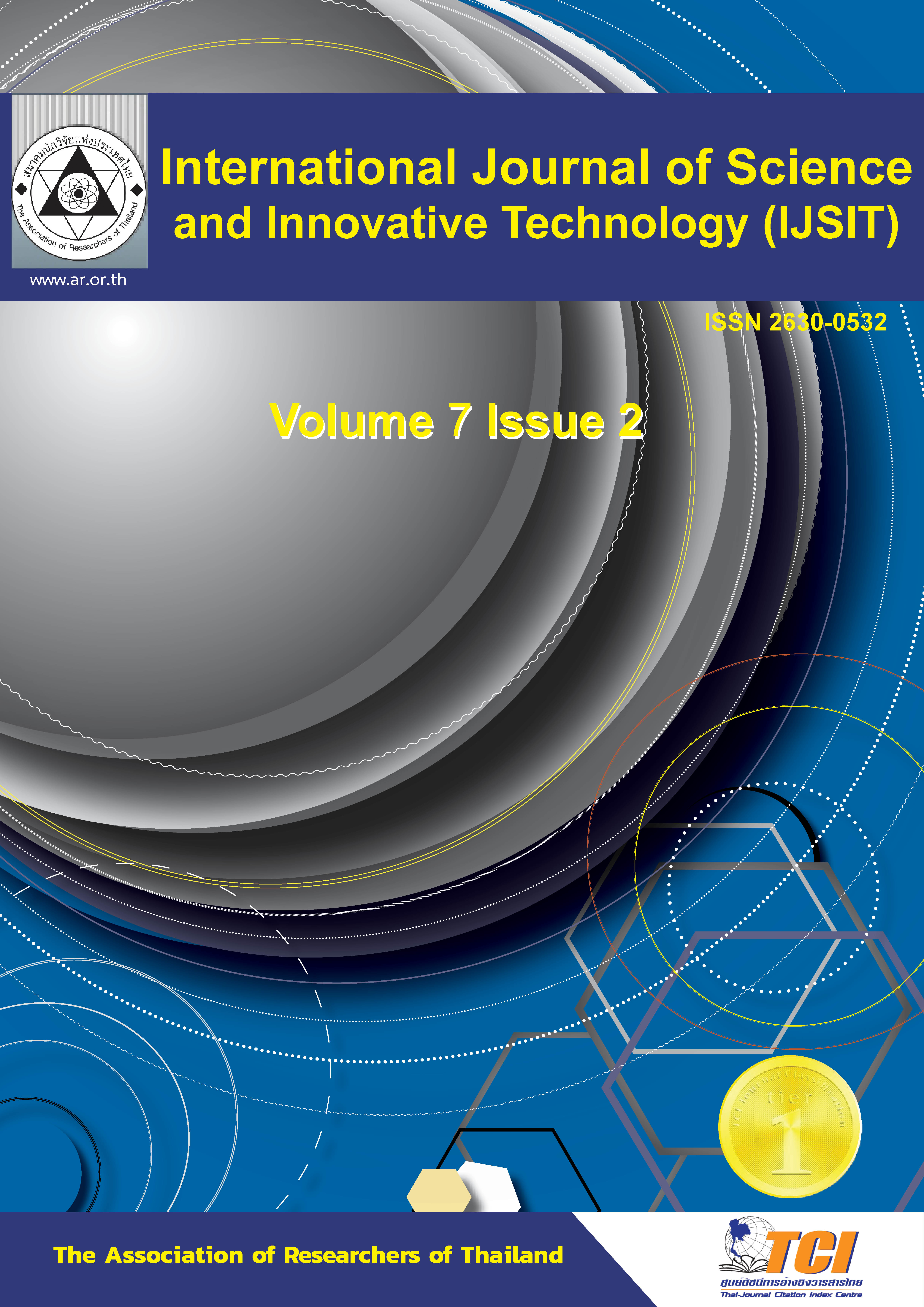research Article Information Technology to Increase the Administrative Effciency for Academics on the New Normal the Graduate Level in Bangkok and the Surrounding Area Research Article Information Technology
Main Article Content
Abstract
The objectives of this research were 1) to study the current conditions, desired conditions and priority needs index of information technology to increase the efficiency of academic administration. 2) to compare the current conditions and desired conditions for using information technology to increase the efficiency of academic administration. 3) to set guidelines for using information technology to increase the efficiency of academic administration. 4) to confirm guidelines for using information technology to increase administrative efficiency for academics. The sample consisted of 268 administrators, teachers and students in graduate private universities in Bangkok and the metropolitan area. The research instrument was a questionnaire with IOC values between .67-1.00 and alpha .895. The data were analyzed by using frequency, percentage, mean, standard deviation, t-test and the priority needs index with PNIModified. The research results were as follows: 1) The current conditions of information technology to increase the efficiency of academic administration was overall at a high level. When classified by aspect, It was at a high level in every aspect, arranged from high to low as follows: teaching process, teachers, regulation, instructional media, data, students, technology, information, and infrastructure respectively. and the overall desirable condition was at a highest level. When classified by aspect, It was at the highest level in 8 areas, arranged from high to low average: teachers, data, instructional media, regulation, students, teaching process, infrastructure, and technology, One area, information was at a high level. 2) The current conditions and desired conditions for using information technology to increase the efficiency of academic administration overall and each aspect were significantly different at the .001 level. 3) The guidelines that have been confirmed by experts by: The priority needs index was equal to 0.263. When arranged in order of necessity from 1-9: Infrastructure (0.366), Data (0.307), Teaching media (0.304), Students (0.294), Regulation (0.290), Technology (0.280), Teachers (0.276), Teaching Process (0.260) Information (0.003). The guidelines obtained from the research were: 1) Technology 2) Information 3) Students 4) Teachers 5) Teaching Media 6) Teaching Process 7) Infrastructure 8) Data and 9) Regulation
Article Details

This work is licensed under a Creative Commons Attribution-NonCommercial-NoDerivatives 4.0 International License.
References
References
Heinich, Robert., Molenda, Michael. , & Russell, James D. (1992). Instructional Media and the New Technologies of Instruction. 3rd ed. New York: John Wiley & Sons.
Krejcie, R.V., & D.W. Morgan. (1970). “Determining Sample Size for Research Activities”. Educational and Psychological Measurement. 30(3) : 607–610.
Morrison, J. L. & Khan, B. H. (2003). The global e-learning framework : An interview with Badrul Khan. The Technology Source. A Publication of the Michigan Virtual University. Retrieved March 1. 2024. [In Thai] , Form http://ts.mivu.org/default.
Nanthawan Ubonwat. (2020). Study of the needs of the internet network system for Supports teaching and learning and provides services to Tha Luang Technical College students Cement Thai Memorial. Bangkok : Office of the Vocational Education Commission Ministry of Education.
Ratchanok Meechukhan. (2022). Use of information and communication technology. In academic administration. Journal of Administrative and Management Innovation. Vol.10 No.2 May–August 2022 p.1-12.
Rattanakhanok Brahmasiri. (2019). The use of technology in the management of higher education in the province. Phitsanulok. Journal of Educational Research. Year 16, Issue 1, January - June 2021, pp. 27-38.
Somsat Thankam. (2021). Using information technology for online collaborative learning. Thesis Master of Education Faculty of Education Eastern University of Management and Technology.
Sukhothai Thammathirat Open University. (2016). Organizing online teaching. Retrieved on 12 June 2021. from the source http://www. google. com.
Suphanee Maneewong. (2017). Assessment of needs in online training in information technology. And communication of Rangsit University staff. Ubon Ratchathani Research and Evaluation Journal. Year 12, Issue 1, January-June 2023. pp.36-45.
Thairath Online. (2020). Worried about inequality in education in Thailand that found Covid has caused students to be especially poor 1.3 million people. Retrieved on 1 June 2024 from https://www.thairath.co.th/news/local/
Thidarat Tannirat. (2022). Assessment of needs regarding the creation of learning media and Requesting patent protection for student teachers. Journal of Educational Studies Educational Studies. Year 16, Issue 1, January-June 2022, pp. 236-247.
Thosaphon Silla. (2022). Necessary needs in using information technology for the administration of affiliated colleges under office of the vocational education commission in Lopburi province. Valaya Alongkorn review journal (Humanities and Social Sciences). Year 12, Issue 3, September-December 2022, pp. 28-39.
Walaiphan Ajareewattana. (2019). Study of the conditions of online teaching and learning in the situation of Spread of coronavirus among special project students . Master of Business Administration Program. Bangkok: Ramkhamhaeng University.

